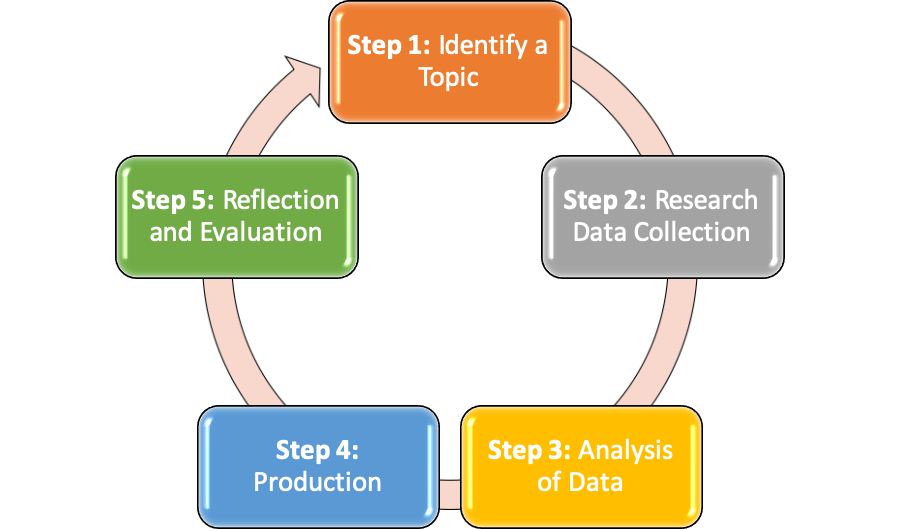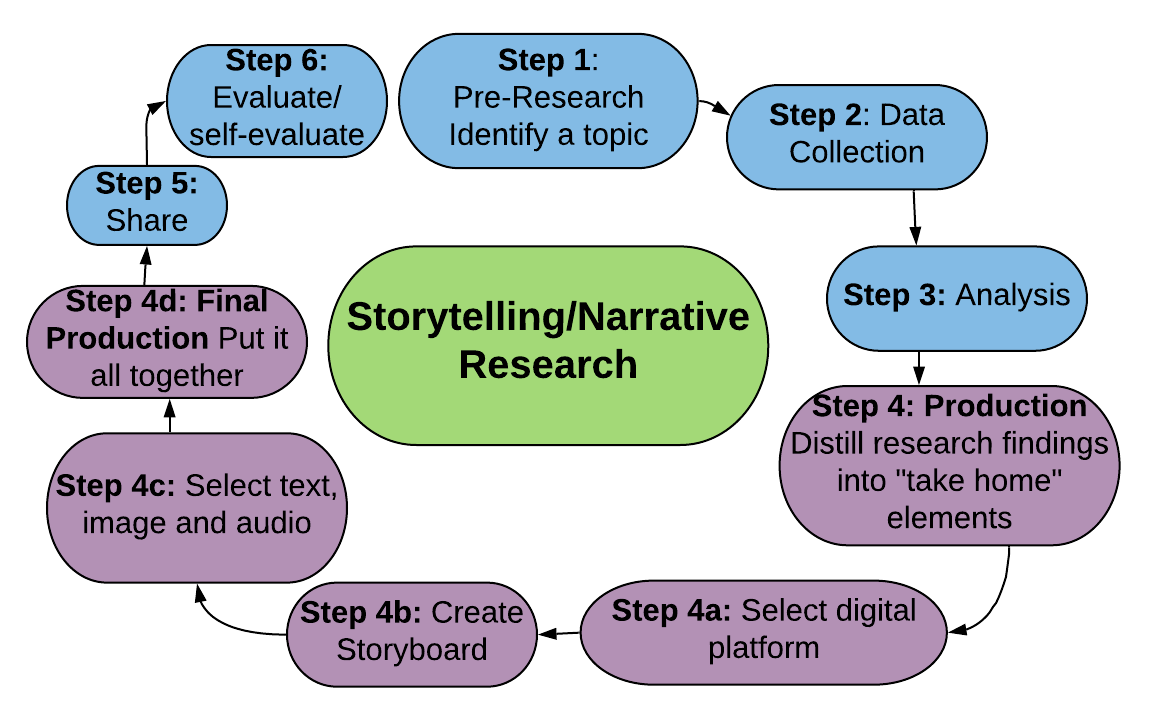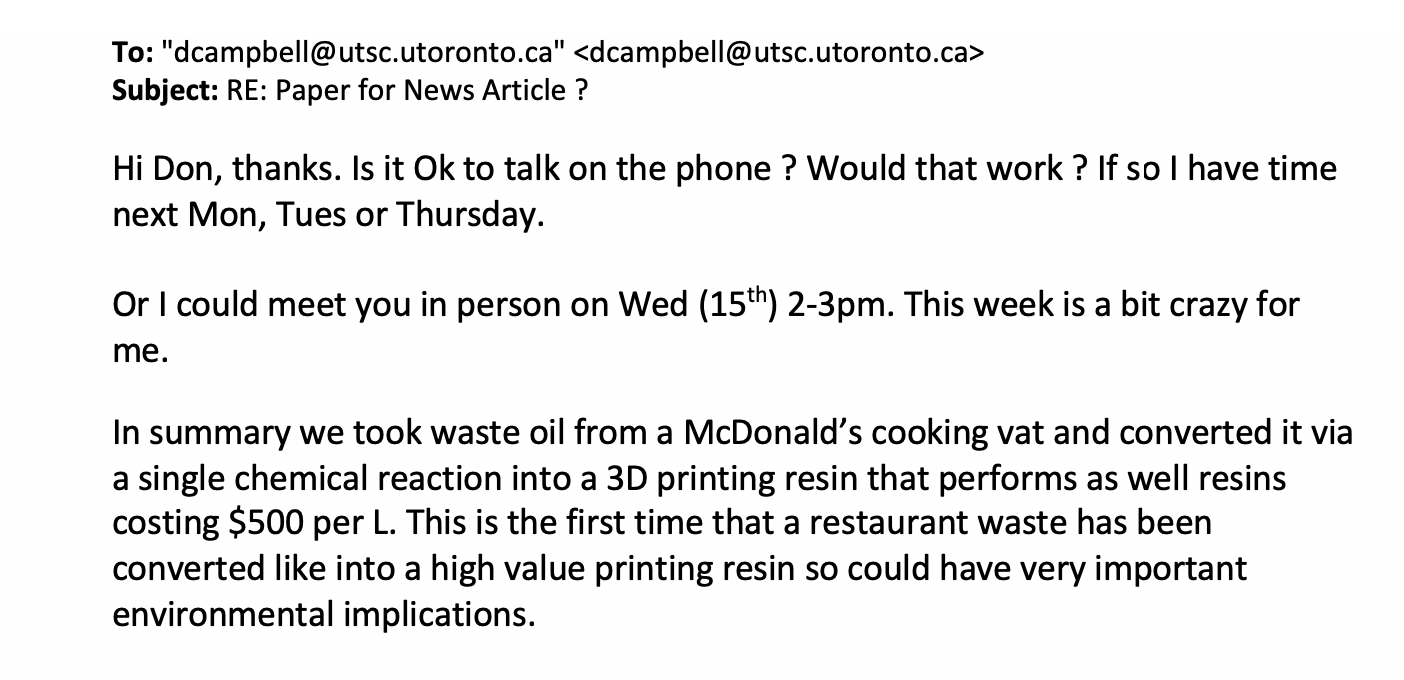Storytelling in Undergraduate Research and Education
The following materials were developed by UTSC Professors Christine Berkowitz (Historical and Cultural Studies), Ken Welch (Biological Sciences), and Gerald Cupchick (Psychology) To support the design and delivery of rich media assignments and leverage the tools, approaches and the resident expertise at the University of Toronto Scarborough. Originally published as a public Quercus course, the project leads built these resources in recognition of both the diversity of pedagogical approaches across disciplines and the commonality in the challenges/barriers faced by faculty in their attempts to adopt media rich assignments.
These materials were funded with a U of T Learning & Education Advancement Fund (LEAF) seed grant and are licensed under Attribution 4.0 International
On this page
- Benefits of rich media assignments
- Challenges of rich media assignments
- Getting Started
- Assignment Exemplars
- Resources for Students
Benefits of rich media assignments
- Significantly deepen the learning experience for students.
- Creative expressions of learning.
- Innovative engagement with content, critical thinking, reflection, data analysis, group work.
- Engage with tools used in the 'real world'.
- Supports multidisciplinary assessment goals.
Challenges of rich media assignments
- Limited instructional time and support to ensure effective digital skills acquisition for students.
- Lack of time and support for Faculty/TAs.
- Access to existing expertise, adaptable tools, and methods being used at UTSC.
- Learning Modules:
Getting Started
As presenters of research we aim to deliver a story and our tales can take many forms. This resource is intended to provide support for media rich assignments (see definition below) that allow the students/researchers to present their findings in a dynamic manner, employing a variety of digital tools to combine audio, text and image.
Adaptability across disciplines/approaches...
We recognize the diversity of pedagogical/research approaches across disciplines but also recognize a commonality in the challenges/barriers faced by faculty in their attempts to adopt media rich assignments. We encourage you to modify the resources provided here to reflect your specific content/process needs.
Our sample assignments are not about doing the research – they are about "communicating" the findings of the research.
The Generic Research Cycle below reflects the common steps in the research process with the substitution of Step #4 which we are calling "Production." This is the step where students/researchers normally begin to compile the results of their data collection/analysis into a final narrative report, the format defined by discipline. For our purposes the focus in Step #4 involves the crafting of the message to be communicated, the selection of digital platforms, audio/image/text editing, and final production of a digital project.

Media Rich Assignments
For the purpose of this project, media rich assignments integrate text, audio, and video in any combination to create immersive experiences and encourage students to engage with the content. Research to date suggests that this type of assignment fosters deeper understanding and recall of the material for recipients and enhances the image of students as creators who are tuned to the needs of the audience while appreciating and respecting the substance of the subject matter.
Storytelling/Narrative Research Assignment Framework

Steps in the Research Process
Steps 1 to 3 are generally common to all disciplines with differences of course in methodology and approach. The focus in producing media rich assignments begins with the production steps shown above in purple, Steps 4 thru 4d:
Step 4: Production - distilling the findings
This step is the meat of your story. What did you learn? How does it relate to the general understanding of this topic and what do you wish to share? There are several ways to approach this and depending on the field of study the approach to this process will vary. For example, a statistical analysis will look very different than a learning that stems from an analysis of qualitative or narrative data. The important point here is to layout the findings and what you find meaningful to share. After the initial draft, go back and review the findings and start to organize it in a way that reads well and tells a story.
Step 4a: selecting the digital platform
This step allows you to choose a method of delivery of your finding. The assignment could pre-define the mode of delivery ie. Podcasts, videos, presentations, written stories etc. In each case you will need to begin by selecting an appropriate platform for project. the following tip sheet can be directly embedded in your courses to support students with these choices:
Step 4b: Create the storyboard
Any mode you choose will require the student to lay out their finding in a storyboard. Lay the content out and design the images (pictures, charts etc.), the text (quotes), videos, scripts. Will this approach enhance your story? Will this approach capture the intended audience? Is it delivering your story/findings in an accurate manner?
Step 4c: select/create text, image and audio
Now that you have a basic sense of your story (4), the platform you plan to use to deliver your story (4a), and your storyboard (4b) you can being to select/create your audio, text, and select images to enhance your story.
Step 4d: Final Production
This is the step where all the pieces come together in the selected platform - edited audio, images and text.
Step 5: Reflection and Evaluation
Once the production is completed, the student should spend some time on reflecting and evaluating their final product before they submit/present it for the final evaluation.
Review tips:
- Edit (spelling, grammar, sentence structure etc.)
- Factcheck
- Review final product against rubric
- Peer review against rubric
- Share with subject matter expert for review
- Share final product if appropriate with general public (social media, release to media, publishers etc.)
Assignment Exemplars
The following example assignment is available for your reference:
Science Communication Podcast
Podcasts or video-podcasts featuring recently published scientific papers can be an important way such work is disseminated.
After all, most people do not read articles in Nature, Science, Proceedings of the National Academy of Sciences, and other journals. But, they do learn about the latest breakthroughs in medicine, the environment, and even zoology …usually through popularized media.
In Prof. Welch's fourth year "Animal Locomotion and Exercise" course, students do just this.
Here are the details of the assignment (Click to download)
- BIOD43 - 2019 - Oral Presentations Instructions.docx
- BIOD43 - 2019 - Storyboard worksheet blank.docx
- BIOD43 - 2019 Scientific Podcast Instructions.docx
Oral History Audio Podcast
Podcast Assignment Overview – WSTD10/HISD25/ANTD20
This course is an advanced undergraduate seminar that emphasizes experiential learning through fieldwork in the community. The course is interdisciplinary in its design and delivery and has been offered since 2013. It is currently offered in partnership with courses in History, Womens’ and Gender Studies and Anthropology and has in the past partnered with City Studies and Sociology. Since the first offering of the course, the final assignment has involved some form of rich media assignment – digital story, mini digital documentary - in this case a final presentation involving 3 podcast episodes presented in a short digital story format.
Oral History Digital Story
Digital Storytelling Assignment Overview – WSTD10/HISD25
This course is an advanced undergraduate seminar that emphasizes experiential learning through fieldwork in the community. The course is interdisciplinary in its design and delivery and has been offered since 2013. It is currently offered in partnership with courses in History, Womens’ and Gender Studies and Anthropology and has in the past partnered with City Studies, Sociology and Anthropology. In this 2016 offering of the course HISD25 and WSTD10 were offered at the same time but each course had its own classroom. The class groups met alone in their disciplinary groups and then for the second half of some of the classes both classes met together for the purposes of training and to facilitate interdisciplinary interaction and research. Since the first offering of the course, the final assignment has involved some form of rich media assignment – digital story, mini digital documentary - in this case a final presentation involved a single oral history interview presented in digital story format. Students worked in interdisciplinary research teams to learn skills, share peer feedback. Students were introduced to qualitative research methods and practice of oral history and storytelling. Each student was responsible for conducting one oral history with one individual (which may take up to 3 interviews or contact sessions). The assignment was scaffolded over multiple steps with the final production beginning with the drafting of the story narrative followed by an exercise in storyboarding and finally pulling it altogether into a video format using Adobe Spark.
In fall 2016, the theme was “Gender Dynamics in the Family – Change Over Time.”
- HISD25_WSTD10 2016 assignment digital story.docx
- HISD25_WSTD10F 2016 Storyboard assignment.docx
- WSTD10F 2016 assignment digital story narrative text.docx
Resources for students
The following resources support student success completing media-rich assignments.
Audio Podcast how-to
Audacity is a free, popular, sound recording and editing app that can be utilized for creating audio tracks for media rich assignments. The following tip-sheets support student learning of key features of the program.
- How to Install Audacity
- How to Create an Audacity Project File
- How to Extract a Clip from an Interview Recording
- How to Record your Voice
- How to Extract Time Codes from a Sound File
- How to Export the Audacity Project to a single wav file
- How to Export the Audacity Project to a single .mp3 file
Writing Science how-to
Don Cambell is a staff reporter with UTSC Marketing & Communications. Don Campbell works with our campus scientists and researchers to feature all the groundbreaking work they are doing. Often this process is initiated by a researcher looking to put a spotlight on upcoming publications or discoveries. Other times he will contact researchers with an offer to feature their work. In either case, Don's challenge is to find a way to communicate highly technical findings in simple language. Consider the following UTSC News Story on research happening on the UTSC campus.
Researchers turn waste cooking oil from McDonald's into high-end 3D printing resin
Initial contact/Background research
To start, Don requests (or has to create) a 2-3 sentence, non-technical summary of findings. In this case, he was able to get a good summary direct from the researcher via email:

This non-technical summary should mention the findings, importance of research, and possible broader implications.
The next step is to do the work: Read the study (or studies) relating to this work and make good notes. Ideally, you will also interview or prepare and send questions to lead researcher(s).
Here's an example of what this step might look like: Don's Notes on Science Article
Preparing for first draft
Interview the lead researcher and record the interview. Keep thorough notes!
- Make sure you ask (seemingly) minor questions (timeline, where research was done, how it was done, facts about volume and mass etc … used in the study)
- Always ask “why is this finding important” or “what does this tell us about”
- Sounds cliché, but always remember 5 W’s (who, what, where, when, why … and how)
- Try to figure out a way to relate this to a mass audience (context)
PRO TIP: Transcribe the interview (see Don's example): Transcription of Interview with Lead Researcher
First draft
Now you are ready to prepare a first draft. It’s important to get all the important and interesting points down (you can trim later).
- Worry less about flow and form and more about details
- Make sure quotes are used sparingly, and when used, they are conversational and meaningful
- Keep quotes short
- After draft, go back and review, start to organize it in a way that reads well and tells a story
- If you have any questions about anything, feel free to follow-up with your source
Take a close look how the document comes together from draft to final: News article draft with comments from source vs. Final version of news article.
Illustrate
PRO TIP: From the start, think of interesting and compelling ways to visually tell the story!
A good image is worth a thousand words (same is true for video). As you work with the researcher(s) to find out how they did the research, what could look visually appealing.
- Remember, things you see all the time may be unique for others. In other words, don’t discount things that look mundane or routine to you
- Content should be high resolution and follow good image/photography practices
- Video content for social media should be kept short (less than 2 mins, ideally 30 secs-1min)
- Script for video should summarize the draft in 6-10 short sentences
Finalize
Make sure that everything you prepare is edited (spelling, grammar, sentence structure etc…) and fact-checked by someone with authority on topic. Remember to contact your “source” to let them see what you’ve prepared and ask for their insight/feedback